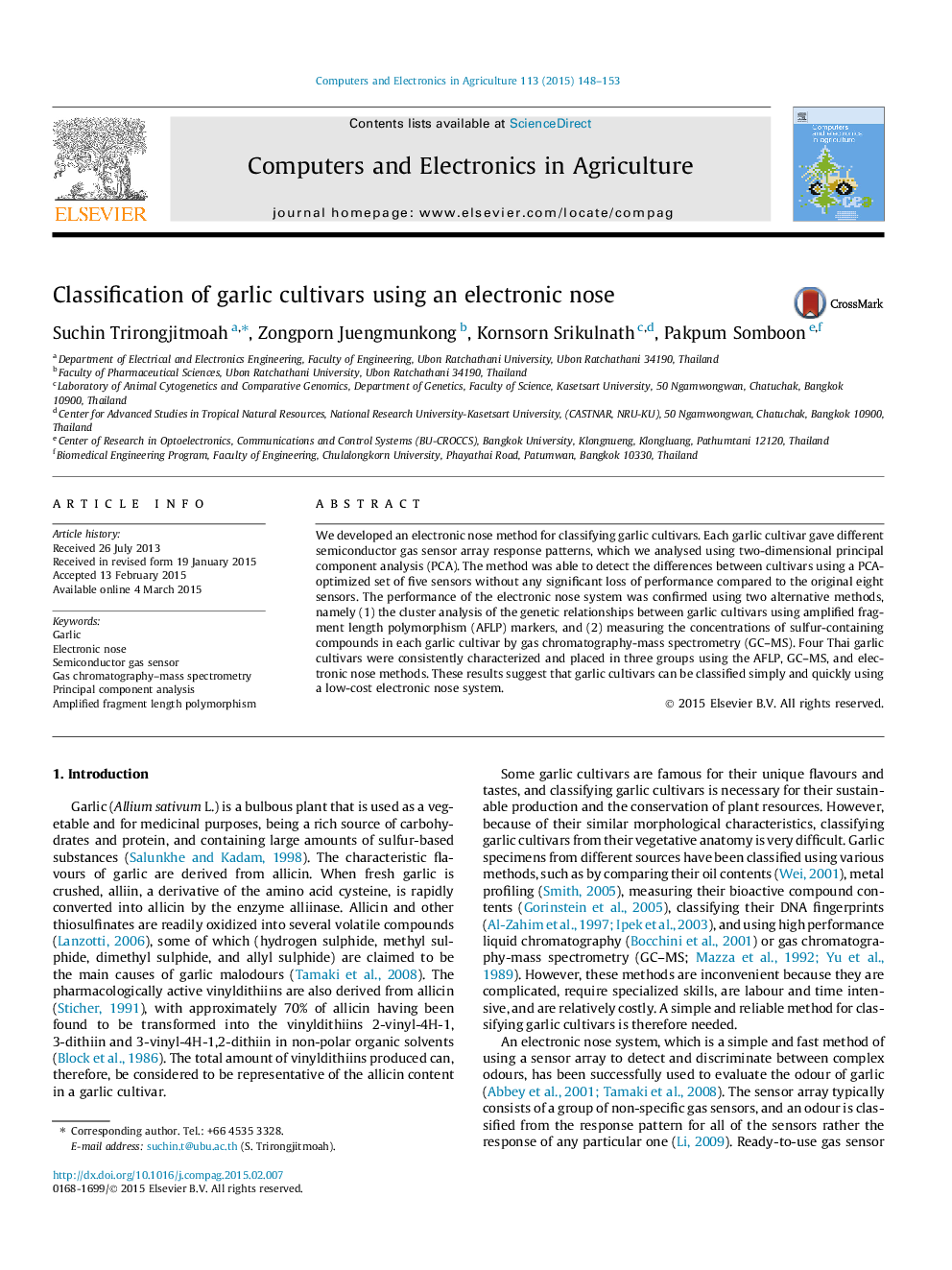| Article ID | Journal | Published Year | Pages | File Type |
|---|---|---|---|---|
| 6540815 | Computers and Electronics in Agriculture | 2015 | 6 Pages |
Abstract
We developed an electronic nose method for classifying garlic cultivars. Each garlic cultivar gave different semiconductor gas sensor array response patterns, which we analysed using two-dimensional principal component analysis (PCA). The method was able to detect the differences between cultivars using a PCA-optimized set of five sensors without any significant loss of performance compared to the original eight sensors. The performance of the electronic nose system was confirmed using two alternative methods, namely (1) the cluster analysis of the genetic relationships between garlic cultivars using amplified fragment length polymorphism (AFLP) markers, and (2) measuring the concentrations of sulfur-containing compounds in each garlic cultivar by gas chromatography-mass spectrometry (GC-MS). Four Thai garlic cultivars were consistently characterized and placed in three groups using the AFLP, GC-MS, and electronic nose methods. These results suggest that garlic cultivars can be classified simply and quickly using a low-cost electronic nose system.
Keywords
Related Topics
Physical Sciences and Engineering
Computer Science
Computer Science Applications
Authors
Suchin Trirongjitmoah, Zongporn Juengmunkong, Kornsorn Srikulnath, Pakpum Somboon,
